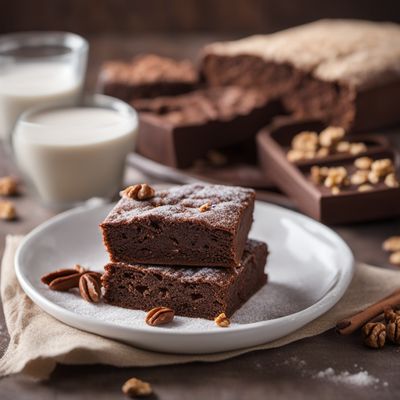
Ingredient
Eastern black walnuts
The Nutty Delight: Eastern Black Walnuts Unveiled
Eastern black walnuts are characterized by their hard shell, which encases a wrinkled, dark brown nutmeat. The nutmeat has a robust, earthy flavor with hints of bitterness and a slightly oily texture. When toasted, the flavor intensifies, and the texture becomes crunchy. The shells are thick and require cracking to access the nutmeat, which can be a labor-intensive process. However, the unique taste and texture of Eastern black walnuts make them worth the effort.
Origins and history
Eastern black walnuts are native to North America and have a rich history dating back thousands of years. Native American tribes used black walnuts for both culinary and medicinal purposes. They were highly valued for their nutritional benefits and were often incorporated into traditional dishes. Today, Eastern black walnuts are widely cultivated in the United States, particularly in the eastern and central regions.
Nutritional information
Eastern black walnuts are a nutrient-dense ingredient, packed with protein, healthy fats, fiber, and essential minerals such as magnesium and phosphorus. They are also a good source of antioxidants and omega-3 fatty acids. A 1-ounce (28g) serving of Eastern black walnuts contains approximately 190 calories.
Allergens
Eastern black walnuts may cause allergic reactions in individuals with nut allergies.
How to select
When selecting Eastern black walnuts, look for nuts that are heavy for their size and free from cracks or holes in the shell. The shells should be dark brown or black, indicating maturity. Avoid nuts with a rancid or off-putting odor.
Storage recommendations
To maintain the freshness and quality of Eastern black walnuts, store them in an airtight container in a cool, dry place. Alternatively, refrigerate or freeze them to extend their shelf life.
How to produce
Eastern black walnuts can be grown by planting the nuts in well-drained soil and providing adequate sunlight. However, they require a long growing season and can take several years to produce a significant harvest. It is recommended to consult local agricultural extension services or nurseries for specific guidance on growing Eastern black walnuts.
Preparation tips
To remove the shell of Eastern black walnuts, use a nutcracker or a hammer to crack the shell. Carefully extract the nutmeat, which can be used as is or toasted for a more intense flavor. Eastern black walnuts are commonly used in baking, such as in cookies, cakes, and bread. They can also be added to salads, pesto, or used as a topping for ice cream or yogurt.
Culinary uses
Eastern black walnuts are commonly used in baking, adding a distinctive nutty flavor to cookies, cakes, and bread. They can also be used in savory dishes, such as salads, pesto, or as a topping for roasted vegetables. Eastern black walnuts pair well with ingredients like chocolate, apples, and cheese, enhancing the overall flavor profile of the dish.
Availability
Eastern black walnuts are commonly available in the United States, particularly in regions where they are cultivated, such as the eastern and central states.
More ingredients from this category
Recipes using Eastern black walnuts » Browse all

Homemade Chocolate and Walnut Cozonac
Decadent Delights: Indulge in Homemade Chocolate and Walnut Cozonac

Linguine with Walnut Sauce
Creamy Delight: Linguine with Walnut Sauce

Imotska Torte - A Delicious Croatian Delight
Heavenly Layers of Imotska Torte: A Croatian Culinary Masterpiece

Rocky Mountain Fiambre
Mountain Harvest Salad: A Rocky Twist on Guatemalan Fiambre

Ekmek Kadayıfı with a Twist
Honey-Soaked Bread Delight

Roasted Chicken with Walnuts
Nutty Delight: Roasted Chicken with a Croatian Twist

Greek Honey and Walnut Cheesecake
Divine Delight: Greek Honey Walnut Cheesecake

Zserbó - Hungarian Walnut and Apricot Pastry
Heavenly Hungarian Delight: Zserbó - A Perfect Blend of Nutty Crunch and Sweet Apricot

Hungarian Chocolate Chip Cookies
Magyarország Csokis Süti (Hungarian Chocolate Cookie)

Kyrgyz Stollen
Mountain Delight: Kyrgyz Stollen - A Fusion of German and Kyrgyz Flavors

Afghan Biscuit Delight
Chocolaty Crunch: Afghan Biscuit Delight

Bratislava Crescent Rolls
Slovak Delight: Bratislava Crescent Rolls
